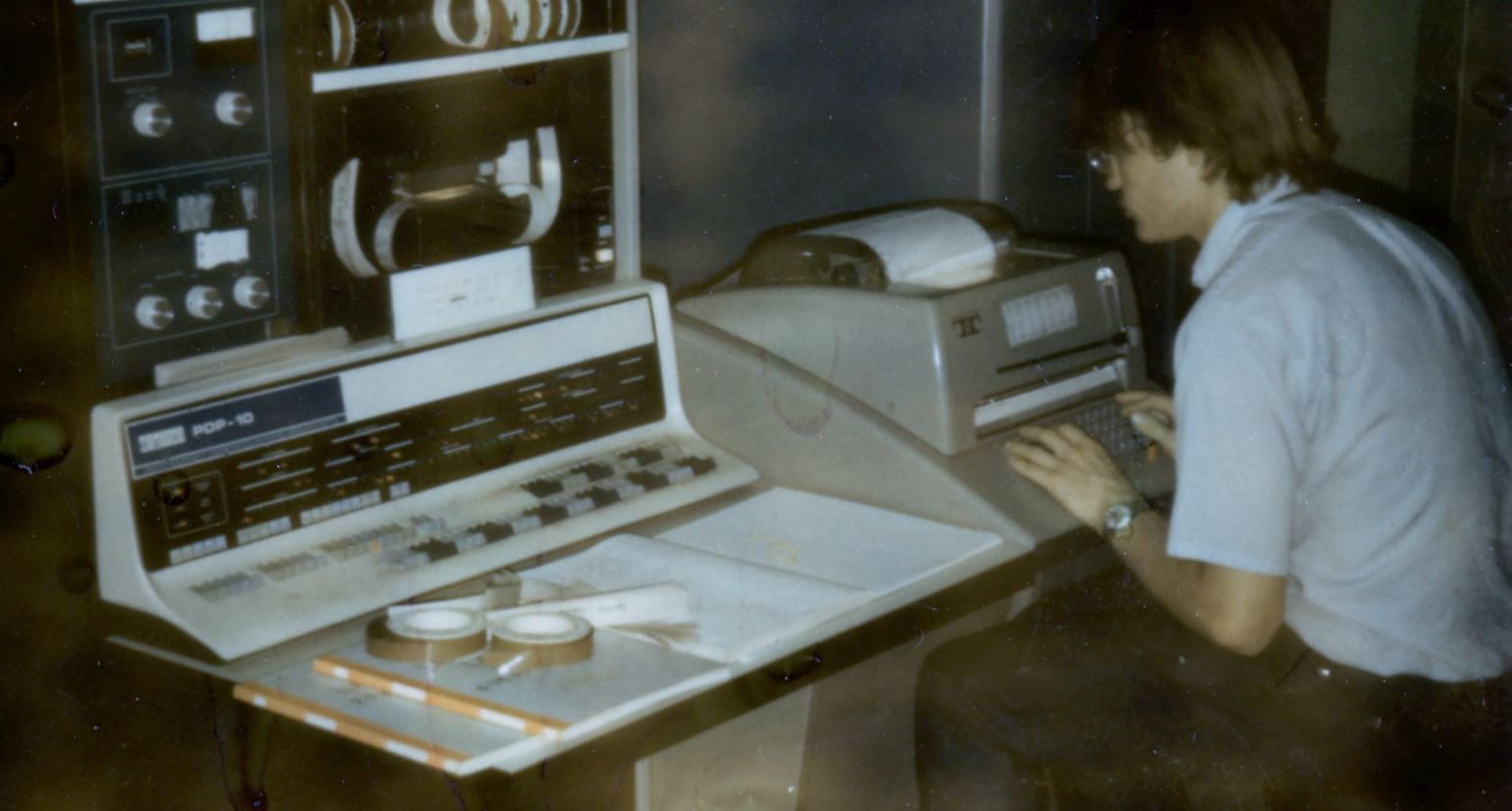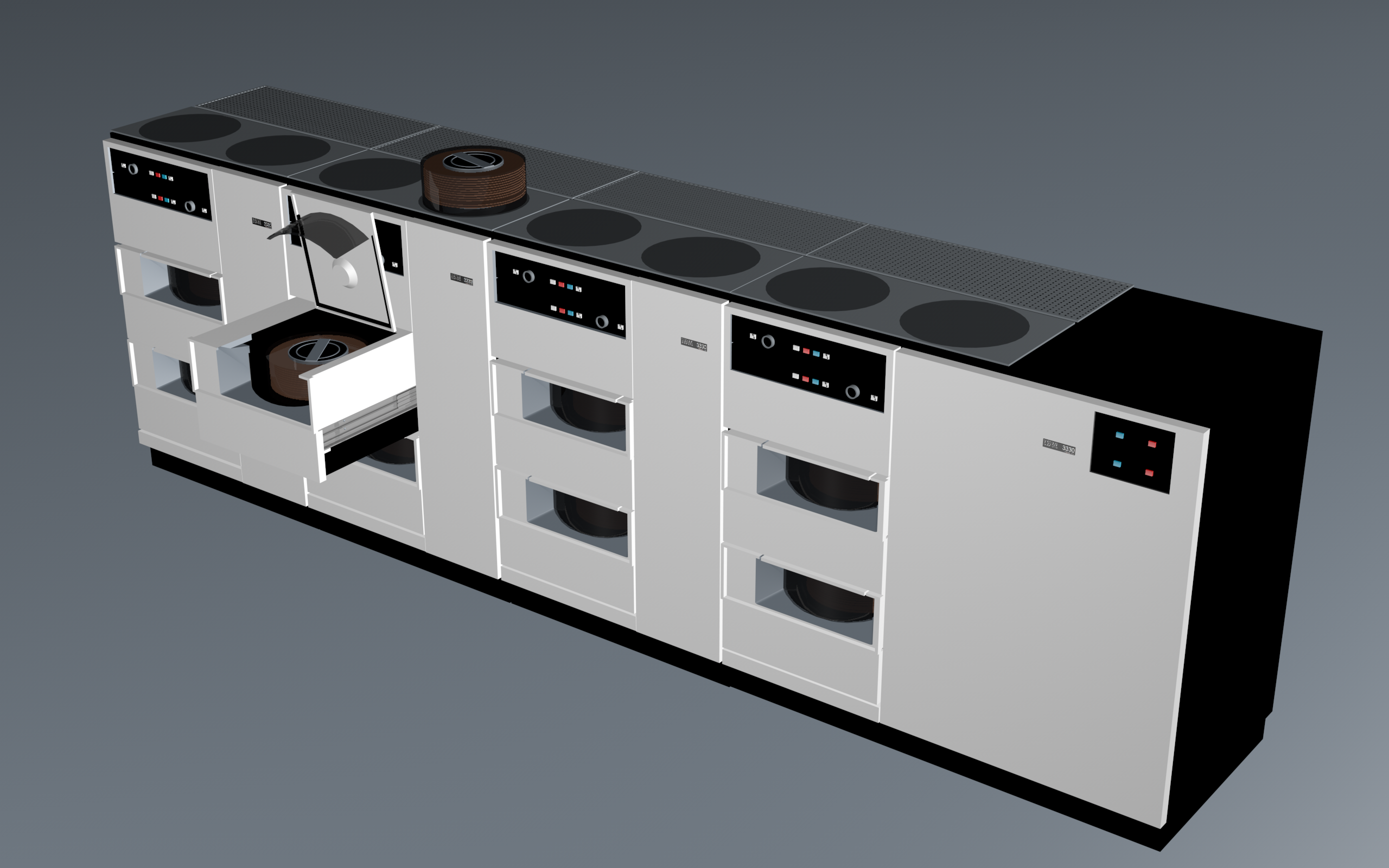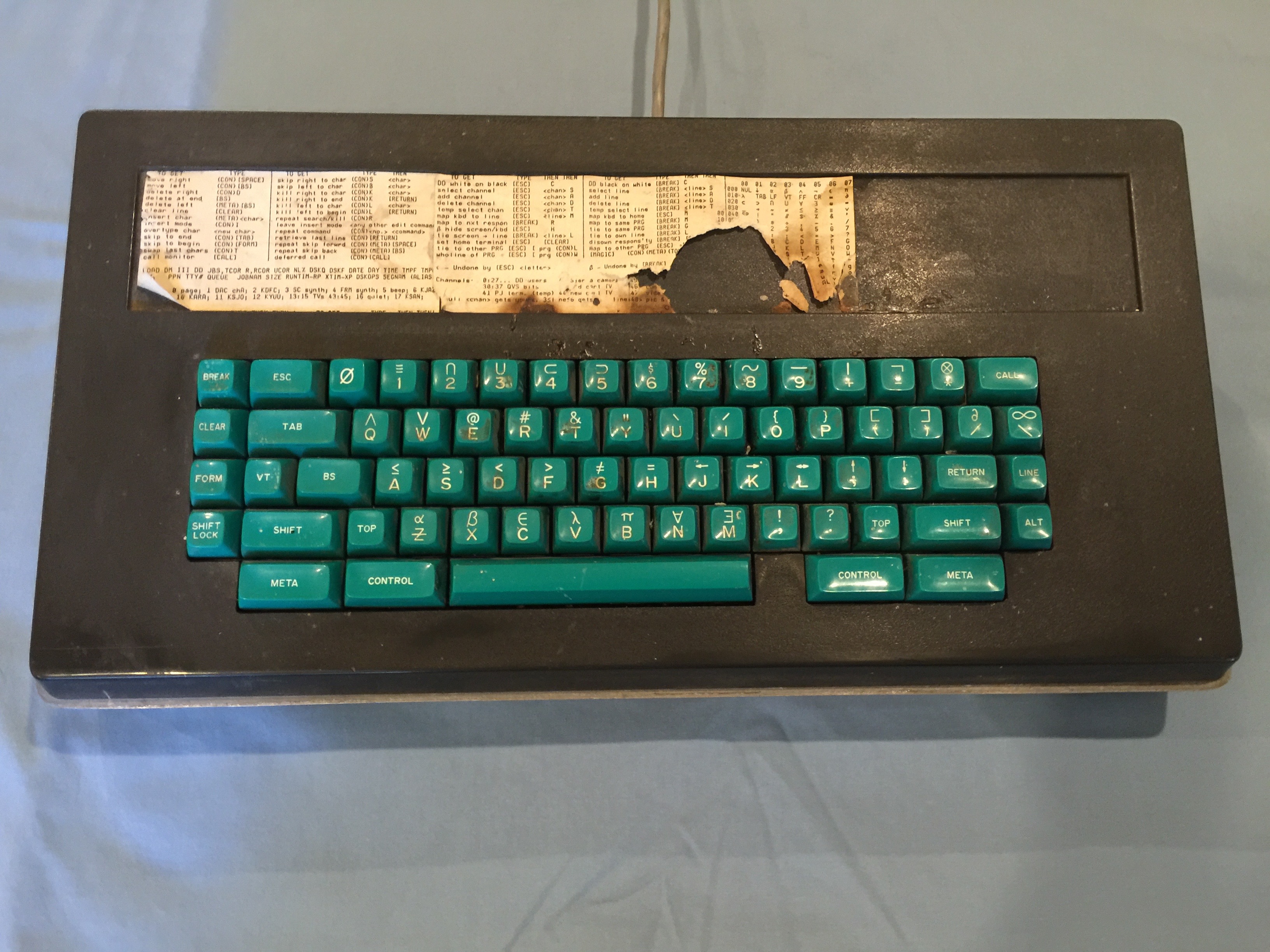This repository contains software and documentation for running the unique PDP-10 KA serial number 32 that was at Stanford in July 1974. Stand alone diagnostics as well as a slightly modified version of the WAITS 6.17J operating system are included with a small sized sample SYS: file system.
Two extra opcodes, XCTR and FIXX, were hacked into this machine by Dave Poole. This repository's time portal is set to July 1974 because it is just after the IBM-3330 pizza oven multi-pack disk system had been upgraded to double-density at 200 Megabytes per spindle; but before the BBN address mapping box was installed in 1975. There were perhaps as many as 275 PDP-10-KA serial numbers.
| generic | specific |
|---|---|
| disks for file system | IBM-3330 with 200MB per drive |
| disk for swapping | Librascope |
| vector graphics terminals | Information International Inc |
| raster graphics terminals | Data Disc |
| console teletype | Teletype Model 35 |
| teletype terminals | Teletype Model 37 |
| teletype terminals | Teletype Model 33 |
| custom keyboard scanner | designed by Lester Earnest |
| custom keyboards | from Micro Switch Corp Freeport, Illinois |
| custom video switch | designed by Lester Earnest |
| custom color video | made by Lynn Quam |
| The wizard in the picture | is Dave Poole |
| chain line printer | Data Products |
| xerographic printer | Xerox Graphics Printer |
| custom calendar clock | made by Phil Petit |
| mobile robot | Stanford Cart |
| robot arms | by Vic Scheinman |
Earlier 1960s Stanford hardware is not included in these simulators: the Rancho Arm, the III image dissector and the Type-30 display which was returned to Suppes's PDP-1 on campus. Significant 1974 hardware which NOT included in these simulators are all the co-processors: the PDP-6, the IMP interface, the PDP-11/45, the Mars Image processor known as the SPS-41 and the Imlac terminals. The unrealible Librascope is resurrected into perfect existence ready for swapping, but then is not needed or used by these simulators after its existence is noticed. With the exception that the Librascope sector register is used as a source of random numbers.
Supporting the simulators there is a common pool of file-systems and data-sets.
Above is one of the original 1970s keyboards for SAIL-WAITS in the D.C.Power Building. Below is a recent 2010s WASD custom keyboard for SAILDART simulators.
The key board with green key caps is authentic. Earnest is quite certain that the zero 0-key should be to the left of the one 1-key. The key board with blue key caps is practical for 21st century people. Note the five space ship icons which serve as spacewar buttons. The arrangement of the 26 Stanford unique characters differs between the green and blue keyboards.
| count | class | glyphs |
|---|---|---|
| 6 | Math | ≤ ≥ ≠ ≡ ∂ ∞ |
| 6 | Logic | ∀ ∃ ∧ ∨ ⊗ ¬ |
| 4 | Horseshoes | ∩ ∪ ⊂ ⊃ |
| 5 | Arrows | ↑ ← → ↔ ↓ |
| 5 | Greek | α β ε λ π |
Simulators are software packages that implement a classic computer at what Gordan Bell calls the ISP level. Professor Gordan Bell and Professor Allen Newell wrote the text-book Computer Structures: Readings and Examples DEC employee Gordan Bell (with Alan Kotok and others) designed and built the PDP-6 and the PDP-10.
Emulators implement a computer at the gate/wire logic level, which now resembles PLA (Programmable Logic Array) prom programming or for that matter a μprocessor level implementation of the ISP.
Unlike the contemporous IBM/360 series of machine implementations, which attempted compliance with an overall Principles-of-Operation; the Digital Corporation PDP-10 family is a sequence of clades based on manually drafted engineering drawings, which were customized per installation, A maintenance manual that explains the drawing notation and the major logic circuits; and most useful, the PDP-10 software titled Maintenance-DEC-10 which is a set of programs named MAINDEC-10-DAK with the copies here of a relevant sample: AA, AB, AC, AD, AE, AF, AG, AH, AI, AJ, AK, AL, AM then BA and finally DA in 1977.
Supnick SIMH https://github.com/simh/simh
Cornwell SIMS https://github.com/rcornwell/sims
j5, j6 and j7 are embedded inside https://saildart.org as 'Java Script' code with too many windows.
In the late 1960s, before the Jargon files went virial (read unhappy MAKNAM), when we were young, we could pronouce all of the PDP-1 and PDP-10 opcodes; as well as all the crytic labels from the SYSTEM or from LISP.
Pdl, datum, dpy, dap, tty, pty, fadr, jfcl, jffo, pdlov, lap, car, cdr, cadr !
Piddle, datum, dippy, dap, titty, pity, fadder, jif-cull, jif-foe, piddle-of, lap, car, coupe-der, cad-der
Dave Poole, of the Foonly crowd, would often pronouce half-word opcodes even in what started out as a normal conversation with outsiders.



